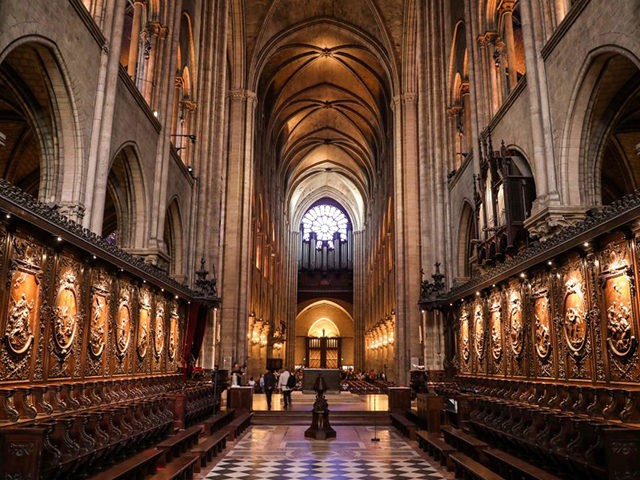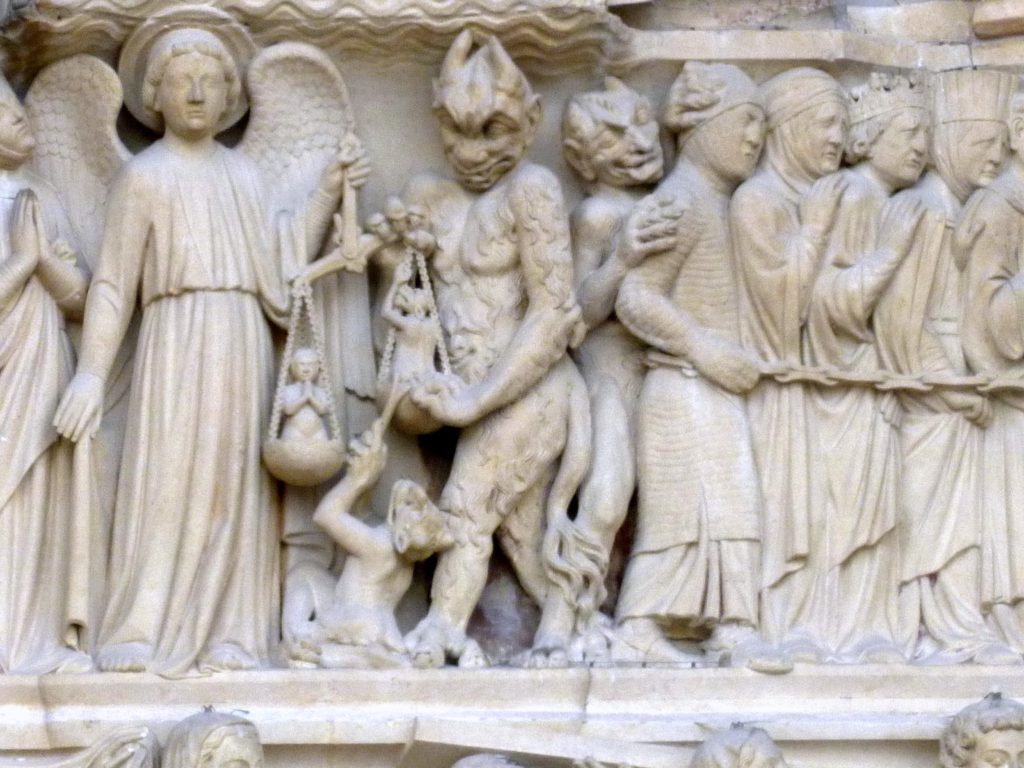
Wednesday
Non-believers as well as believers may feel the urge to send up a prayer of thanks that Notre Dame’s basic structure appears to have survived the fire. The world-wide concern over the catastrophe indicates that the cathedral was not only meaningful to Christians. A friend alerted me to a Fleda Brown poem that helps us understand why.
The poet, who has abandoned her childhood Christian belief, is visiting the cathedral with her Jewish daughter and Jewish grandchildren. She uses Philip Larkin’s thoughtful “Church Going” to structure her reflection.
Looking over a country church that is becoming a ruin, Larkin wonders what its purpose possibly could be. Agnostic himself, Larkin is nevertheless startled by how the structure speaks to a deep hunger within him. Over the ages, he observes, people have gravitated to this place in order to “grow wise.” He knows this from their decision to be buried here:
…someone will forever be surprising
A hunger in himself to be more serious,
And gravitating with it to this ground,
Which, he once heard, was proper to grow wise in,
If only that so many dead lie round.
Differentiating herself (as Larkin does) from believers, Brown remembers back to when the dignity of the church held her childhood self in thrall. She re-experiences that feeling in her Notre Dame visit, even though “the stone and glass say[ ] not a word to make any of us believe.” She imagines this might have been true as well of the workers who built Notre Dame. Perhaps the project was more about a paycheck than God. Nevertheless, the wheel that pulled up stones created a glorious space that pulls up those who visit.
It’s therefore immaterial that her family doesn’t understand the church’s layout. The least she can do, Brown figures, is offer up a prayer, and so she prays to Larkin’s insight, to Notre Dame’s crazy architecture, and to the buttresses that hold it up.
In the final stanza, she indicates the church doesn’t have a very good history when it comes to Jews and non-believers. Notre Dame, however, is more than the orthodox Christian belief conveyed in the Portal of the Last Judgment frieze, which depicts the damned being dragged off to hell (see below). May her grandchildren, she prays, be buttressed by the cathedral’s crazy beauty against whatever life has in store for them.
Notre Dame
A shape less recognizable each week,
A purpose more obscure.
________—Philip Larkin, “Church Going”
In spite of fundamentalists, it keeps on being
true, what Larkin said. I’m walking through
with my Jewish daughter and her three boys,
the stone and glass saying not a word to make
any of us believe, but I’m seeing the church
I grew up with, shadowed like this to let
the glitter in. Dignity’s what held me
then and almost makes a Christian of me
now, again: God multiplying as he
enters through the glass, amusing himself.
We trace the transept, nave, and choir, walking
the sign of the cross, even the boys, who don’t know
what it means. We lift our eyes to the clerestory
a hundred thousand workers gave their backs
to put there, to feed their families, and only
slightly, if at all, I’d guess, to honor God.
The stones went up. The wheel that pulled each one
to greater heights was raised again, and left
up there at last, too high to bring it down,
the mind that glorious in its space, mathematical
in its hopes. It’s brought us here. The five of us
walk plaque to plaque, to each candle-lit niche
for each dead saint. A prayer, I think, is the least
I can do: I pray to Larkin’s poem, to gargoyle
waterspouts, to all the things that jut,
that disagree, disrupt. I pray to buttresses
that launch off wildly from the side and land.
May they brace everything up. And to these boys,
puzzling at the frieze of all the damned in hell.


